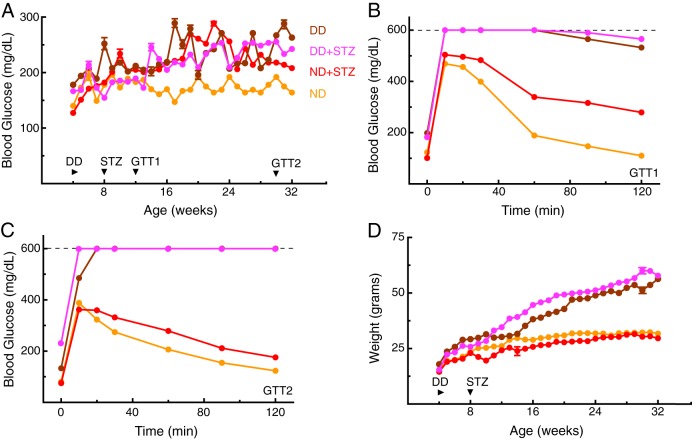Fig. 1.
Metabolic dysfunction in mouse models of diabetes. (A) Elevated blood glucose emerged in ND+STZ, DD and DD+STZ groups by 15 weeks of age [DD=215±4.35 mg/dl (n=7); DD+STZ=235±2.28 mg/dl (n=6); ND+STZ=205±3.14 mg/dl (n=12), significantly higher than ND=161±1.73 mg/dl (n=7), P<0.01] and was sustained until 32 weeks [DD=263±1.35 mg/dl (n=4); DD+STZ=253±2.22 mg/dl (n=3); ND+STZ=208±3.64 mg/dl (n=9), significantly higher than ND=164±2.73 mg/dl (n=5), P<0.01]. (B,C) Evidence of impaired glucose clearance on a glucose tolerance test was present in each diabetic model when measured at 12 (B; GTT1) and 30 (C; GTT2) weeks, with DD groups being the most impaired. Dashed lines indicate the upper limit of glucometer sensitivity. (D) Abnormal weight gain emerged in the diabetic models by 15 weeks (DD=35.2±3.11 g, DD+STZ=41.3±1.42 g, ND+STZ=24.9±2.31 g), which was significantly different from ND (29.0±2.14 g), P<0.05. Data are mean±s.e.m. (error bars are often occluded by the data symbols).

